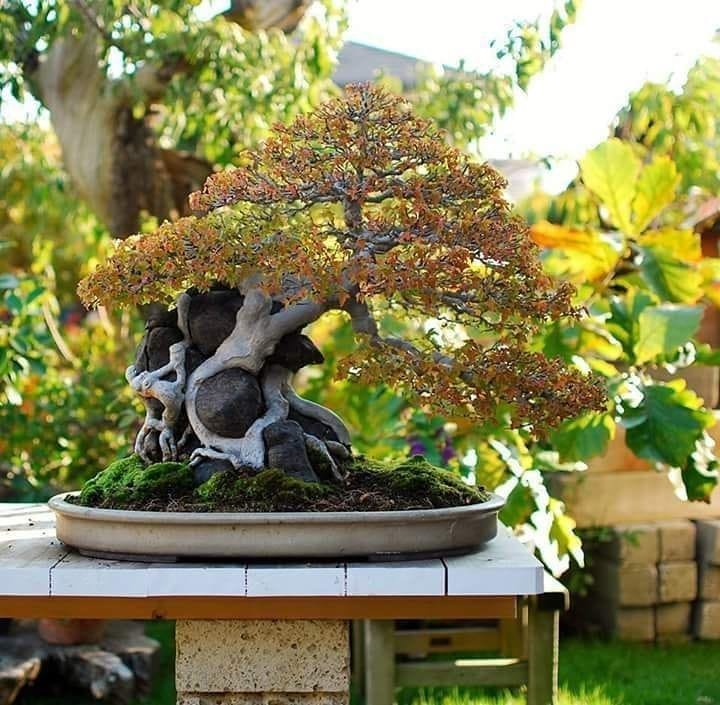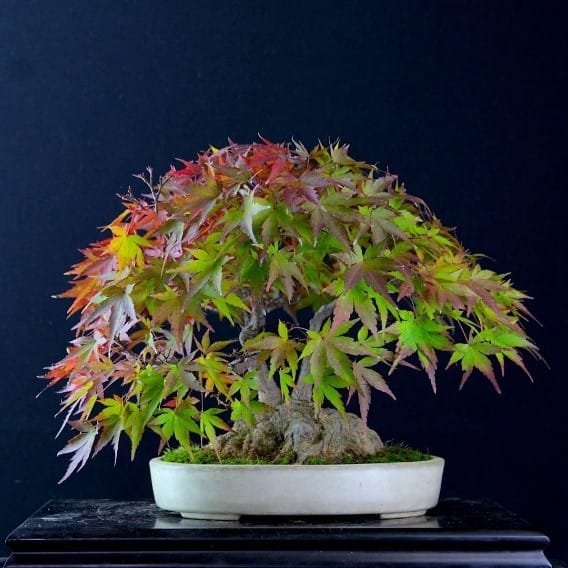In one of his whimsical poems, George Cooper paints the dreamy picture of a conversation between the Wind and the leaves of the trees. The Wind invites the leaves to come to the meadows and play with him. Then the Wind encourages the leaves to put on their “dresses of red and gold” as the days “grow cold.”
Admiring the mesmerizing dance of the leaves in the nature is a beautiful experience.
However, if you are faced with trying to learn how to revive a bonsai tree with dry and brittle leaves, you most probably won’t feel the subtle poetry in this task.
Or on the contrary, you may, indeed, feel the joy of communicating with your bonsai tree and helping it reach its fullest potential with your care and attention.
Fortunately, dealing with dry and brittle leaves is not the worst charge – but you do want to know the most common reasons leading to this issue so that you can act accordingly.
Top 2 Factors that Make Bonsai Tree Leaves Turn Crispy and Dry (+ Solutions)

Under-watering your Bonsai
Dry leaves that can be easily snapped in a breeze can be due to under-watering.
Under-watering may seem a fairly simple issue to resolve but that’s also one of the main reasons why newbie bonsai gardeners tend to underestimate the situation and end up watching their tiny masterpiece die.
Under-watered bonsai plants will need careful watering to be revived. If you try to compensate under-watering with overwatering in return, you can further damage your plant because of the fact it is not transpiring.
Transpiration refers to the process of water evaporation from plants’ leaves.
Above all, keep in mind that under-watering is associated with causing water stress to your bonsai plants. Due to this type of stress, photosynthesis can be significantly limited, as highlighted in an extensive study published in the Journal of Experimental Botany.
While watering is necessary, it is crucial to start small and let your plant to take as much time as needed to recover. The road to recovery is a slow one but with patience and diligence, the damage is not irreversible.
In order to ease the process of transpiring rates recovery, avoid placing your bonsai tree with brittle, dry leaves in spots with direct access to sunlight. However, don’t forget to choose a bright position and not a shady one.
Video by: FuseSchool – Global Education – Xylem and Phloem – Part 2 – Transpiration – Transport in Plants
Source: youtube.com
Solution to Under-watered Bonsai Trees with Dry Leaves
If you believe under-watering is the reason for the brittle leaves of your bonsai, start by standing your miniature plant in water.
Wait until the entire pot is covered and keep it standing for some good five minutes. Doing so will help in fully rewetting the root system of your bonsai.
Next, allow it to drain completely. From now on, you can proceed with regular watering (no overwatering, remember). Just do check on your plant daily and when you notice that the soil looks and feels slightly damp (not dry but not wet either) – then it’s time for careful watering again.
Bonus Tip
Misting your under-watered bonsai on a daily basis is a great way to increase humidity and directly target the leaves zones to help speed up the process of recovery.
Heads Up
If you have any suspicion that your bonsai may have already died, it might be a good idea to check whether it is alive before applying any methods for revival.
For this purpose, do a tiny cut on the branches or on the trunk. Examine the layer that reveals behind the bark, the Cambium layer.
If it is colored in green, then your bonsai is still alive. If it is colored in brown, unfortunately, there’s little you can do to save your miniature fellow. But little doesn’t mean anything – you can still try to let your bonsai tree recover by placing it in a cool, damp place. The best you can do next is to wait for new shots to appear eventually.
Your Bonsai is Root-bound
It might be the case that the dry, brittle leaves of your bonsai are not related to under-watering. If packed into a container that is too small to house the root system properly, your tiny fellows can become root-bound.
Just like the name suggests, root-bound bonsai trees will possess a root system that is literally packed in the wrong-sized pot.
New, fine roots are needed to help in the absorption of water and nutrients. Without proper water and nutrients intake, your bonsai tree can become brittle over time with no visible reason – or at least, with no reason that is easy to recognize at a glance.
Don’t forget to examine the condition of the root system of your bonsai plants on a regular basis. Act accordingly based on the unique requirements of the types of plants you are growing as part of your bonsai journey.
Bonus Tip
It might be a wise idea to consider the type of soil you have been using so far. Standing water can be a huge problem.
Even though it sounds counterintuitive, overwatering and/or poor-quality soil often lead to root rot. Root rot, in return, can cause plants to become brittle and die off. Therefore, such issues can only be fixed by opting for bonsai soil of the highest quality.
The Wrap-Up

Image Source: Pinterest
Close your eyes and think about your bonsai journey so far.
What have you learned? Where do you want to get next?
If you have been struggling with thinking how to revive a bonsai tree with dry and brittle leaves, you are on the right track! Your bonsai growing journey is not only a sweet symphony to be played somewhere in La La Land; sometimes, there’s a pain, there’s a struggle. But there’s also hope and satisfaction for during this incredible journey, you will learn so many invaluable lessons about every aspect of life, that it’s merely nothing less but an inspiration that is worth every minute of your time and dedication.


